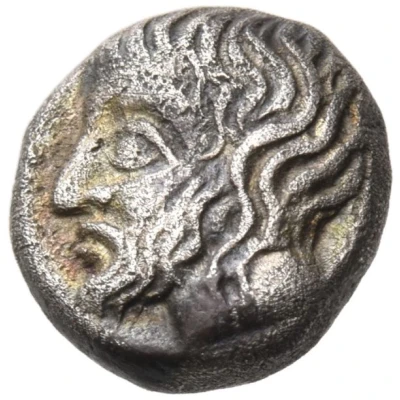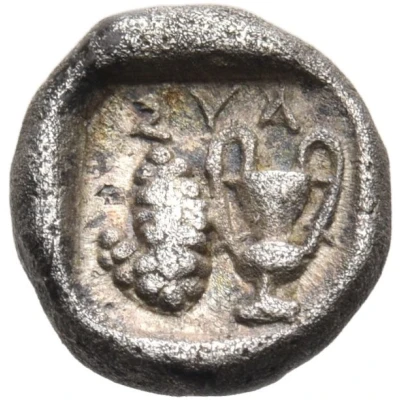


© Nomos AG
Obol 400 BC - 370 BC
| Silver | 1.02 g | 9 mm |
| Issuer | Syangela (Caria) |
|---|---|
| Type | Standard circulation coin |
| Years | 400 BC - 370 BC |
| Value | Obol (⅙) |
| Currency | Drachm |
| Composition | Silver |
| Weight | 1.02 g |
| Diameter | 9 mm |
| Shape | Round (irregular) |
| Technique | Hammered, Incuse |
| Orientation | Variable alignment ↺ |
| Demonetized | Yes |
| Updated | 2024-10-10 |
| Numista | N#427472 |
|---|---|
| Rarity index | 100% |
Reverse
ΣΥΑ above kantharos; to left, inverted bunch of grapes; all within square incuse with rounded corners.
Script: Greek
Lettering: ΣΥΑ
Interesting fact
The Obol coin from Syangela (Caria) was used as a form of currency in ancient Greece, specifically in the city-state of Caria, and was made of silver. It's interesting to note that the Obol coin was the smallest denomination of currency in ancient Greece, and it was equivalent to one-sixth of a drachma, which was the standard unit of currency at the time. This coin was used for everyday transactions and was a symbol of the economic and cultural exchange that took place in the region during that period.
Price
| Date | Mintage | VG | F | VF | XF | AU | UNC |
|---|---|---|---|---|---|---|---|
| ND (400 BC - 370 BC) | - | - | - | - | - | - |
Values in the table are based on evaluations by sales realized on Internet platforms. They serve as an indication only for Obol (400 BC - 370 BC) coin.